#Electronics and Computer Science
Explore tagged Tumblr posts
Text
Exploring the Scope of Electronics and Computer Science Engineering at TCET
Thakur College of Engineering and Technology (TCET), established in 2001, has rapidly ascended to become one of Mumbai's premier engineering institutions. Affiliated with the University of Mumbai and accredited by the National Assessment and Accreditation Council (NAAC) with an 'A' grade, TCET offers a diverse range of undergraduate and postgraduate programs. Among its distinguished offerings is the Electronics and Computer Science Engineering program, a course that seamlessly integrates two pivotal fields of modern technology.
Understanding Electronics and Computer Science Engineering
Electronics and Computer Science Engineering is an interdisciplinary domain that amalgamates principles from both electronics engineering and computer science. This fusion equips students with the expertise to design and develop advanced computer systems, electronic devices, and software applications. The curriculum encompasses a broad spectrum of topics, including microprocessor design, embedded systems, software development, and digital communication. Graduates are thus prepared to tackle challenges in various sectors, from telecommunications to information technology.
The Scope of Electronics and Computer Science Engineering
The scope of Electronics and Computer Science Engineering is vast and continually expanding. In today's technology-driven world, professionals with dual expertise in electronics and computer science are in high demand. They play a crucial role in developing innovative solutions that drive advancements in various industries. From designing sophisticated electronic devices to creating complex software systems, the opportunities are both diverse and rewarding.
TCET's Commitment to Excellence
TCET's vision is to excel in technical education and become an internationally renowned premier institute of engineering and technology. The college's mission includes providing state-of-the-art infrastructure and the right academic ambiance for undergraduate, postgraduate, and Ph.D. programs. This commitment ensures that students receive a holistic education that combines theoretical knowledge with practical application.
Program Highlights at TCET
The Electronics and Computer Science Engineering program at TCET is designed to provide students with a comprehensive understanding of both fields. The curriculum is regularly updated to reflect the latest industry trends and technological advancements. Students have access to modern laboratories equipped with cutting-edge tools and technologies, facilitating hands-on learning and experimentation.
Career Opportunities for Graduates
Graduates of the Electronics and Computer Science Engineering program have a plethora of career opportunities available to them. They can pursue roles such as system control engineers, software developers, electronic design engineers, system analysts, and test engineers. The interdisciplinary nature of the program also opens doors to emerging fields like artificial intelligence, cybersecurity, and the Internet of Things (IoT).
Why Choose TCET?
TCET stands out as a beacon of quality education in Mumbai. The college's emphasis on structured and guided teaching methodologies, maintaining academic rigor, and fostering a student-centric approach ensures that graduates are well-prepared to meet industry demands. Additionally, TCET's proactive student professional and personality development programs contribute to the holistic growth of its students.

Conclusion
In conclusion, the Electronics and Computer Science Engineering program at TCET offers students a unique opportunity to delve into two of the most dynamic fields in technology. With a robust curriculum, state-of-the-art facilities, and a commitment to excellence, TCET solidifies its position as the best engineering college in Mumbai for aspiring engineers aiming to make a mark in the world of electronics and computer science.
0 notes
Text
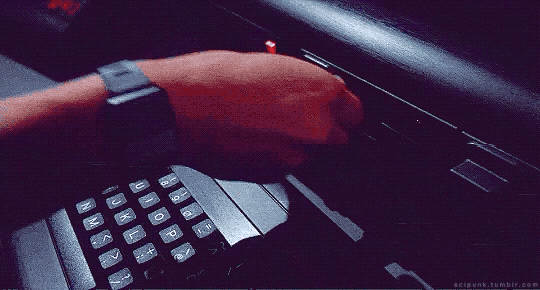

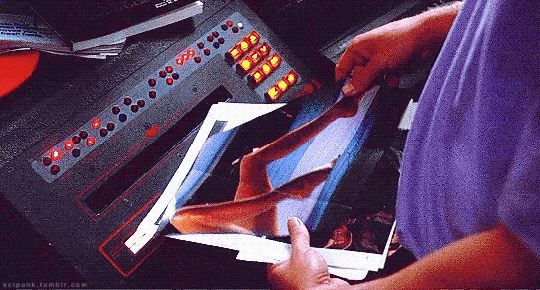
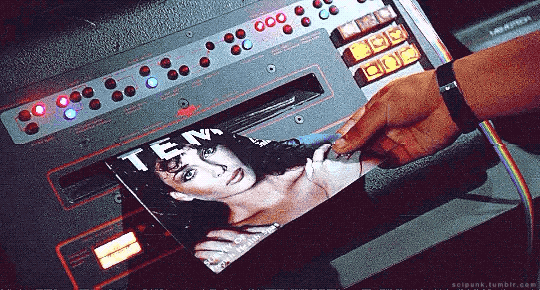
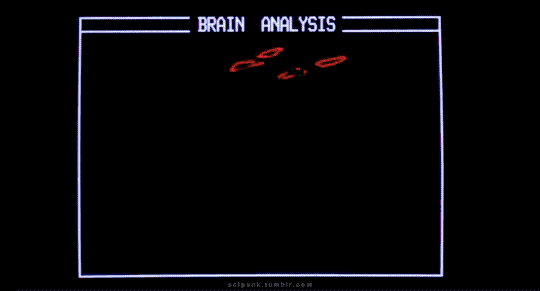
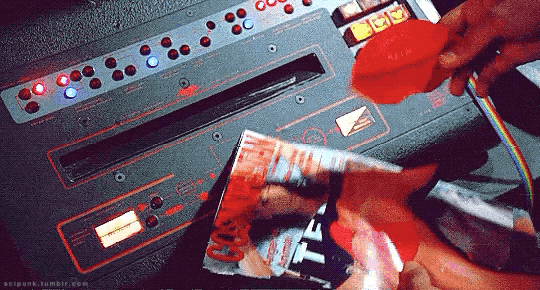

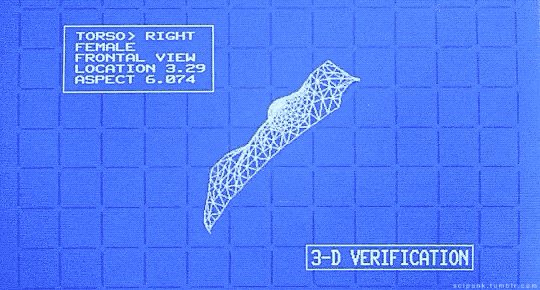
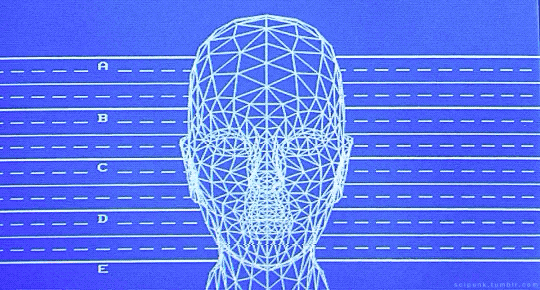
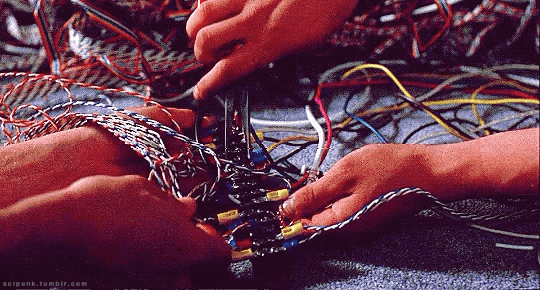
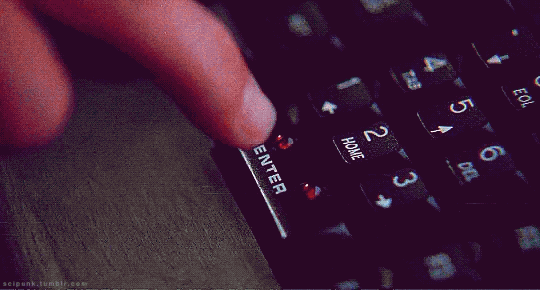
Weird Science (1985)
#weird science#scifi movies#funny#fantasy#bride of frankenstein#dream girl#nerd#geeky#barbie doll#scifi fantasy#computers#80s movies#1980s#dream woman#gifs#gifset#modem#scanner#electronics#3d animation
2K notes
·
View notes
Text

Data across the globe
#art#nostalgia#1980s#vaporwave#aesthetic#vintage#magazine#1990s#neon colors#neon#illustration#80s aesthetic#90s#90s aesthetic#80s#internet#hardware#software#retro computing#computer science#computers#computer#pc#retrowave#retro tech#tech#technology#amiga#electronic#synthwave
496 notes
·
View notes
Text
How a Computer Works - Part 1 (Components)
I am about to teach you on a real fundamental, connecting up electronic components level, how a computer actually works. Before I get into the meat of this though (you can just skip down below the fold if you don't care), here's the reasons I'm sitting doing so in this format:
Like a decade or two ago, companies Facebook pushed this whole "pivot to video" idea on the whole internet with some completely faked data, convincing everyone that everything had to be a video, and we need to start pushing back against that. Especially for stuff like complex explanations of things or instructions, it's much more efficient to just explain things clearly in text, maybe with some visual aids, so people can easily search, scan, and skip around between sections. It's also a hell of a lot easier to host things long term, and you can even print out a text based explainer and not need a computer to read it, keep it on a desk, highlight it, etc.
People are so clueless about how computers actually work that they start really thinking like it's all magical. Even programmers. Aside from how proper knowledge lets you get more out of them, this leads to people spouting off total nonsense about "teaching sand to think" or "everything is just 1s and 0s" or "this 'AI' a con artist who was trying to sell me NFTs a month ago probably really is an amazing creative thinking machine that can do everything he says!"
We used to have this cultural value going where it was expected that if you owned something and used it day to day, you'd have enough basic knowledge of how it worked that if it stopped working you could open it up, see what was wrong, and maybe fix it on your own, or maybe even put one together again from scratch, and that's obviously worth bringing back.
I'm personally working on a totally bonkers DIY project and I'd like to hype up like-minded people for when it gets farther along.
So all that said, have a standard reminder that I am completely reliant on Patreon donations to survive, keep updating this blog, and ideally start getting some PCBs and chips and a nice oscilloscope to get that mystery project off the ground.
Electricity probably doesn't work like how you were taught (and my explanation shouldn't be trusted too far either).
I remember, growing up, hearing all sorts of things about electricity having this sort of magical ability to always find the shortest possible path to where it needs to get, flowing like water, and a bunch of other things that are kind of useful for explaining how a Faraday cage or a lightning rod works, and not conflicting with how simple electronics will have a battery and then a single line of wire going through like a switch and a light bulb or whatever back to the other end of the battery.
If you had this idea drilled into your head hard enough, you might end up thinking that if we have a wire hooked to the negative end of a battery stretching off to the east, and another wire stretching off to the east from the positive end, and we bridge between the two in several places with an LED or something soldered to both ends, only the westernmost one is going to light up, because hey, the shortest path is the one that turns off as quickly as possible to connect to the other side, right? Well turns out no, all three are going to light up, because that "shortest path" thing is a total misunderstanding.
Here's how it actually works, roughly. If you took basic high school chemistry, you learned about how the periodic table is set up, right? A given atom, normally, has whatever number of protons in the core, and the same number of electrons, whipping all over around it, being attracted to those protons but repelled by each other, and there's particular counts of electrons which are super chill with that arrangement so we put those elements in the same column as each other, and then as you count up from those, you get the elements between those either have some electrons that don't fit all tight packed in the tight orbit and just kinda hang out all wide and lonely and "want to" buddy up with another atom that has more room, up to the half full column that can kinda go either way, then as we approach the next happy number they "want to" have a little more company to get right to that cozy tight packed number, and when you have "extra" electrons and "missing" electrons other atoms kinda cozy up and share so they hit those good noble gas counts.
I'm sure real experts want to scream at me for both that and this, but this is basically how electricity works. You have a big pile of something at the "positive" end that's "missing electrons" (for the above reason or maybe actually ionized so they really aren't there), and a "negative" end that's got spares. Then you make wires out of stuff from those middle of the road elements that have awkward electron counts and don't mind buddying up (and also high melting points and some other handy qualities) and you hook those in there. And the electron clouds on all the atoms in the wire get kinda pulled towards the positive side because there's more room over there, but if they full on leave their nucleus needs more electron pals, so yeah neighbors get pulled over, and the whole wire connected to the positive bit ends up with a positive charge to it, and the whole wire on the negative bit is negatively charged, and so yeah, anywhere you bridge the gap between the two, the electrons are pretty stoked about balancing out these two big awkward compromises and they'll start conga lining over to balance things out, and while they're at it they'll light up lights or shake speakers or spin motors or activate electromagnets or whatever other rad things you've worked out how to make happen with a live electric current.
Insulators, Resistors, Waves, and Capacitors
Oh and we typically surround these wires made of things that are super happy about sharing electrons around with materials that are very much "I'm good, thanks," but this isn't an all or nothing system and there's stuff you can connect between the positive and negative ends of things that still pass the current along, but only so much so fast. We use those to make resistors, and those are handy because sometimes you don't want to put all the juice you have through something because it would damage it, and having a resistor anywhere along a path you're putting current through puts a cap on that flow, and also sometimes you might want a wire connected to positive or negative with a really strong resistor so it'll have SOME sort of default charge, but if we get a free(r) flowing connection attached to that wire somewhere else that opens sometimes, screw that little trickle going one way, we're leaning everyone the other way for now.
The other thing with electricity is is that the flow here isn't a basic yes/no thing. How enthusiastically those electrons are getting pulled depends on the difference in charge at the positive and negative ends, and also if you're running super long wires then even if they conduct real good, having all that space to spread along is going to kinda slow things to a trickle, AND the whole thing is kinda going to have some inherent bounciness to it both because we're dealing with electrons whipping and spinning all over and because, since it's a property that's actually useful for a lot of things we do with electricity, the power coming out of the wall has this intentional wobbly nature because we've actually got this ridiculous spinny thing going on that's constantly flip flopping which prong of the socket is positive and which is negative and point is we get these sine waves of strength by default, and they kinda flop over if we're going really far.
Of course there's also a lot of times when you really want to not have your current flow flickering on and off all the time, but hey fortunately one of the first neat little electronic components we ever worked out are capacitors... and look, I'm going to be straight with you. I don't really get capacitors, but the basic idea is you've got two wires that go to big wide plates, and between those you have something that doesn't conduct the electricity normally, but they're so close the electromagnetic fields are like vibing, and then if you disconnect them from the flow they were almost conducting and/or they get charged to their limit, they just can't deal with being so charged up and they'll bridge their own gap and let it out. So basically you give them electricity to hold onto for a bit then pass along, and various sizes of them are super handy if you want to have a delay between throwing a switch and having things start doing their thing, or keeping stuff going after you break a connection, or you make a little branching path where one branch connects all regular and the other goes through a capacitor, and the electricity which is coming in in little pulses effectively comes out as a relatively steady stream because every time it'd cut out the capacity lets its charge go.
We don't just have switches, we have potentiometers.
OK, so... all of the above is just sort of about having a current and maybe worrying about how strong it is, but other than explaining how you can just kinda have main power rails running all over, and just hook stuff across them all willy-nilly rather than being forced to put everything in one big line, but still, all you can do with that is turn the whole thing on and off by breaking the circuit. Incidentally, switches, buttons, keys, and anything else you use to control the behavior of any electronic device really are just physically touching loose wires together or pulling them apart... well wait no, not all, this is a good bit to know.
None of this is actually pass/fail, really, there's wave amplitudes and how big a difference we have between the all. So when you have like, a volume knob, that's a potentiometer, which is a simple little thing where you've got your wire, it's going through a resistor, and then we have another wire we're scraping back and forth along the resistor, using a knob, usually, and the idea is the current only has to go through X percent of the resistor to get to the wire you're moving, which proportionately reduces the resistance. So you have like a 20 volt current, you've got a resistor that'll drop that down to 5 or so, but then you move this other wire down along and you've got this whole dynamic range and you can fine tune it to 15 or 10 or whatever coming down that wire. And what's nice about this again, what's actually coming down the wire is this wobbily wave of current, it's not really just "on" or "off, and as you add resistance, the wobble stays the same, it's just the peaks and valleys get closer to being just flat. Which is great if you're making, say, a knob to control volume, or brightness, or anything you want variable intensity in really.
Hey hey, it's a relay!
Again, a lot of the earliest stuff people did with electronics was really dependent on that analog wobbly waveform angle. Particularly for reproducing sound, and particularly the signals of a telegraph. Those had to travel down wires for absurd distances, and as previously stated, when you do that the signal is going to eventually decay to nothing. But then someone came up with this really basic idea where every so often along those super long wires, you set something up that takes the old signal and uses it to start a new one. They called them relays, because you know, it's like a relay race.
If you know how an electromagnet works (something about the field generated when you coil a bunch of copper wire around an iron core and run an electric current through it), a relay is super simple. You've got an electromagnet in the first circuit you're running, presumably right by where it's going to hit the big charged endpoint, and that magnetically pulls a tab of metal that's acting as a switch on a new circuit. As long as you've got enough juice left to activate the magnet, you slam that switch and voom you've got all the voltage you can generate on the new line.
Relays don't get used too much in other stuff, being unpopular at the time for not being all analog and wobbily (slamming that switch back and forth IS going to be a very binary on or off sorta thing), and they make this loud clacking noise that's actually just super cool to hear in devices that do use them (pinball machines are one of the main surviving use cases I believe) but could be annoying in some cases. What's also neat is that they're a logical AND gate. That is, if you have current flowing into the magnet, AND you have current flowing into the new wire up to the switch, you have it flowing out through the far side of the switch, but if either of those isn't true, nothing happens. Logic gates, to get ahead of myself a bit, are kinda the whole thing with computers, but we still need the rest of them. So for these purposes, relays re only neat if it's the most power and space efficient AND gate you have access to.
Oh and come to think of it, there's no reason we need to have that magnet closing the circuit when it's doing its thing. We could have it closed by default and yank it open by the magnet. Hey, now we're inverting whatever we're getting on the first wire! Neat!
Relay computers clack too loud! Gimme vacuum tubes!
So... let's take a look at the other main thing people used electricity for before coming up with the whole computer thing, our old friend the light bulb! Now I already touched a bit on the whole wacky alternating current thing, and I think this is actually one of the cases that eventually lead to it being adopted so widely, but the earliest light bulbs tended to just use normal direct current, where again, you've got the positive end and the negative end, and we just take a little filament of whatever we have handy that glows when you run enough of a current through it, and we put that in a big glass bulb and pump out all the air we can, because if we don't, the oxygen in there is probably going to change that from glowing a bit to straight up catching on fire and burning immediately.
But, we have a new weird little problem, because of the physics behind that glowing. Making something hot, on a molecular level, is just kinda adding energy to the system so everything jitters around more violently, and if you get something hot enough that it glows, you're getting it all twitchy enough for tinier particles to just fly the hell off it. Specifically photons, that's the light bit, but also hey, remember, electrons are just kinda free moving and whipping all over looking for their naked proton pals... and hey, inside this big glass bulb, we've got that other end of the wire with the more positive charge to it. Why bother wandering up this whole coily filament when we're in a vacuum and there's nothing to get in the way if we just leap straight over that gap? So... they do that, and they're coming in fast and on elliptical approaches and all, so a bunch of electrons overshoot and smack into the glass on the far side, and now one side of every light bulb is getting all gross and burnt from that and turning all brown and we can't have that.
So again, part of the fix is we switched to alternating current so it's at least splitting those wild jumps up to either side, but before that, someone tried to solve this by just... kinda putting a backboard in there. Stick a big metal plate on the end of another wire in the bulb connected to a positive charge, and now OK, all those maverick electrons smack into here and aren't messing up the glass, but also hey, this is a neat little thing. Those electrons are making that hop because they're all hot and bothered. If we're not heating up the plate they're jumping to, and there's no real reason we'd want to, then if we had a negative signal over on that side... nothing would happen. Electrons aren't getting all antsy and jumping back.
So now we have a diode! The name comes because we have two (di-) electrodes (-ode) we care about in the bulb (we're just kind of ignoring the negative one), and it's a one way street for our circuit. That's useful for a lot of stuff, like not having electricity flow backwards through complex systems and mess things up, converting AC to DC (when it flips, current won't flow through the diode so we lop off the bottom of the wave, and hey, we can do that thing with capacitors to release their current during those cutoffs, and if we're clever we can get a pretty steady high).
More electrodes! More electrodes!
So a bit after someone worked out this whole vacuum tube diode thing, someone went hey, what if it was a triode? So, let's stick another electrode in there, and this one just kinda curves around in the middle, just kinda making a grate or a mesh grid, between our hot always flowing filament and that catch plate we're keeping positively charged when it's doing stuff. Well this works in a neat way. If there's a negative charge on it, it's going to be pushing back on those electrons jumping over, and if there's a positive charge on it, it's going to help pull those electrons over (it's all thin, so they're going to shoot right past it, especially if there's way more of a positive charge over on the plate... and here's the super cool part- This is an analog thing. If we have a relatively big negative charge, it's going to repel everything, if it's a relatively big positive, it's going to pull a ton across, if it's right in the middle, it's like it wasn't even in there, and you can have tiny charges for all the gradients in between.
We don't need a huge charge for any of this though, because we're just helping or hindering the big jump from the high voltage stuff, and huh, weren't we doing this whole weak current controlling a strong current thing before with the relay? We were! And this is doing the same thing! Except now we're doing it all analog style, not slapping switch with a magnet, and we can make those wavy currents peak higher or lower and cool, now we can have phone lines boost over long distances too, and make volume knobs, and all that good stuff.
The relay version of this had that cool trick though where you could flip the output. Can we still flip the output? We sure can, we just need some other toys in the mix. See we keep talking about positive charges and negative charges at the ends of our circuits, but these are relative things. I mentioned way back when how you can use resistors to throttle how much of a current we've got, so you can run two wires to that grid in the triode. One connects to a negative charge and the other positive, with resistors on both those lines, and a switch that can break the connection on the positive end. If the positive is disconnected, we've got a negative charge on the grid, since it's all we've got, but if we connect it, and the resistor to the negative end really limits flow, we're positive in the section the grid's in. And over on the side with the collecting plate, we branch off with another resistor setup so the negative charge on that side is normally the only viable connection for a positive, but when we flip the grid to positive, we're jumping across the gap in the vacuum tube, and that's a big open flow so we'll just take those electrons instead of the ones that have to squeeze through a tight resistor to get there.
That explanation is probably a bit hard to follow because I'm over here trying to explain it based on how the electrons are actually getting pulled around. In the world of electronics everyone decided to just pretend the flow is going the other way because it makes stuff easier to follow. So pretend we have magical positrons that go the other way and if they have nothing better to do they go down the path where we have all the fun stuff further down the circuit lighting lights and all that even though it's a tight squeeze through a resistor, because there's a yucky double negative in the triode and that's worse, but we have the switch rigged up to make that a nice positive go signal to the resistance free promised land with a bonus booster to cut across, so we're just gonna go that way when the grid signal's connected.
Oh and you can make other sorts of logic circuits or double up on them in a single tube if you add more grids and such, which we did for a while, but not really relevant these days.
Cool history lesson but I know there's no relays or vacuum tubes in my computer.
Right, so the above things are how we used to make computers, but they were super bulky, and you'd have to deal with how relays are super loud and kinda slow, and vacuum tubes need a big power draw and get hot. What we use instead of either of those these days are transistors. See after spending a good number of years working out all this circuit flow stuff with vacuum tubes we eventually focused on how the real important thing in all of this is how with the right materials you can make a little juncture where current flows between a positive and negative charge if a third wire going in there is also positively charged, but if it's negatively charged we're pulling over. And turns out there is a WAY more efficient way of doing that if you take a chunk of good ol' middle of the electron road silicon, and just kinda lightly paint the side of it with just the tiniest amount of positive leaning and negative leaning elements on the sides.
Really transistors don't require understanding anything new past the large number of topics already covered here, they're just more compact about it. Positive leaning bit, negative leaning bit, wildcard in the middle, like a vacuum tube. Based on the concepts of pulling electrons around from chemistry, like a circuit in general. The control wire in the middle kinda works in just a pass-fail sort of way, like a relay. They're just really nice compared to the older alternatives because they don't make noise or have moving parts to wear down, you don't have to run enough current through them for metal to start glowing and the whole room to heat up, and you can make them small. Absurdly small. Like... need an electron microscope to see them small.
And of course you can also make an inverter super tiny like that, and a diode (while you're at it you can use special materials or phosphors to make them light emitting, go LEDs!) and resistors can get pretty damn small if you just use less of a more resistant material, capacitors I think have a limit to how tiny you can get, practically, but yeah, you now know enough of the basic fundamentals of how computers work to throw some logic gates together. We've covered how a relay, triode, or transistor function as an AND gate. An OR gate is super easy, you just stick diodes on two wires so you don't have messy backflow then connect them together and lead off there. If you can get your head around wiring up an inverter (AKA NOT), hey, stick one after an AND to get a NAND, or an OR to get a NOR. You can work out XOR and XNOR from there right? Just build 4 NANDs, pass input A into gates 1 and 2, B into 2 and 3, 2's output into 1 and 3, 1 and 3's output into 4 for a XOR, use NORs instead for a XNOR. That's all of them right? So now just build a ton of those and arrange them into a computer. It's all logic and math from there.
Oh right. It's... an absurd amount of logic and math, and I can only fit so many words in a blog post. So we'll have to go all...
CONTINUED IN PART 2!
Meanwhile, again, if you can spare some cash I'd really appreciate it.
557 notes
·
View notes
Text

Researchers propose source mask optimization technique in computational lithography, by Zhang Nannan, Chinese Academy of Sciences
#computers#tecnology#lithography#computational lithography#electronics#circuits#integrated circuits#science#physics#engineering
24 notes
·
View notes
Text







J. Presper Eckert – Scientist of the Day
J. Presper Eckert, an American electrical engineer and computer expert, was born Apr. 9, 1919, in Philadelphia.
Learn more
#Presper Eckert#computers#electronics#histsci#histSTM#20th century#history of science#Ashworth#Scientist of the Day
22 notes
·
View notes
Text


12th December, Thursday
7:46am: I woke up at 4am, no I promise I did, but I also think I dissociated for like an hour so rip that one hour where I could've slept and/or saved the world nobody will ever know T_T
started on my electronics assignment for 2 hours after that though, thank god
the chapter I'm working on is far superior than the previous chapter, if only because my professor - who I have actual BEEF with, which is a first for me as a former ass-kisser in highschool but eh, new academic year new me - has far better lectures on Boolean Algebra than he ever did on Operational Amplifiers, which I still need to make time to self study because I barely passed the first Internal 💀
in other news, it hasn't hit me yet that the eras tour has ended but at the same time I'm also having withdrawals? its very confusing lol but we cope with the movie as usual 👍 don't smile because it happened, baby cry because its overrr
aight I'm off to uni, maybe I'll post pictures of that cute dog if I find it again later
#axythings#studyinspo#studyblr#study movitation#electronics#university studyblr#computer science engineering
44 notes
·
View notes
Text
Lua x Electronics
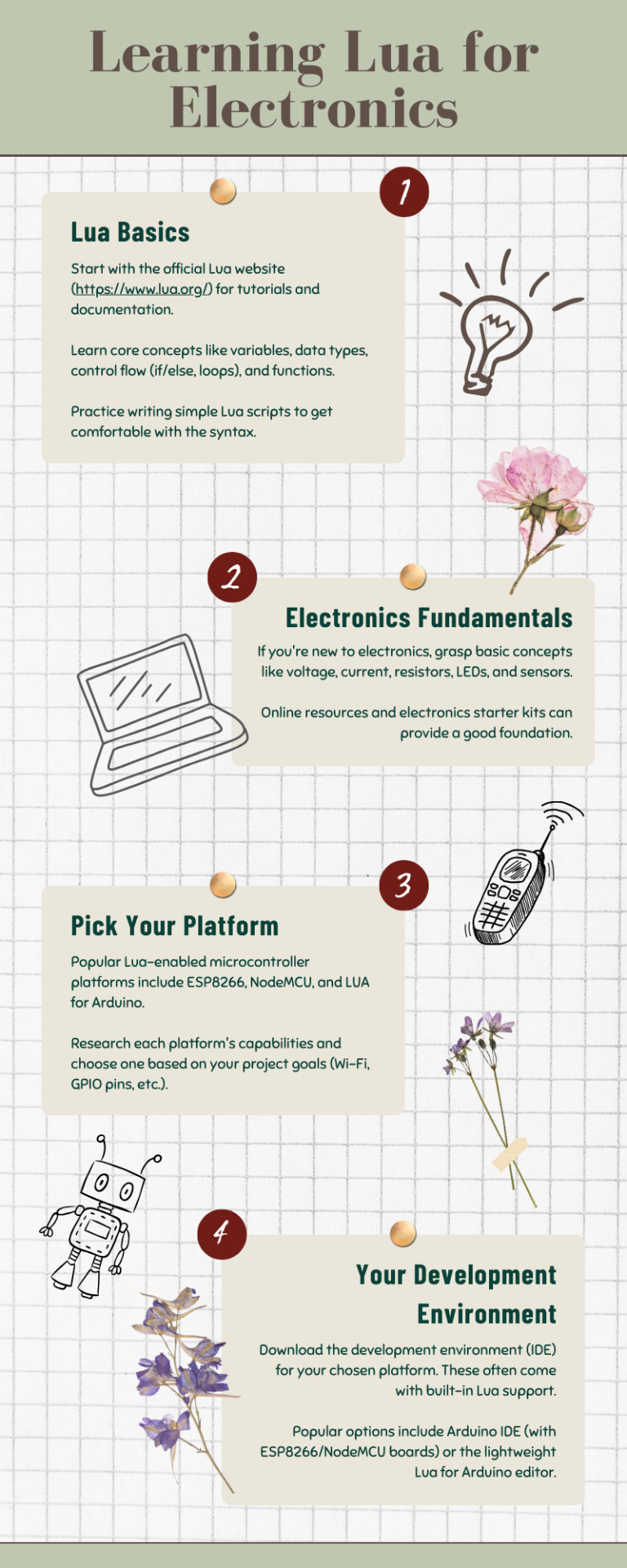
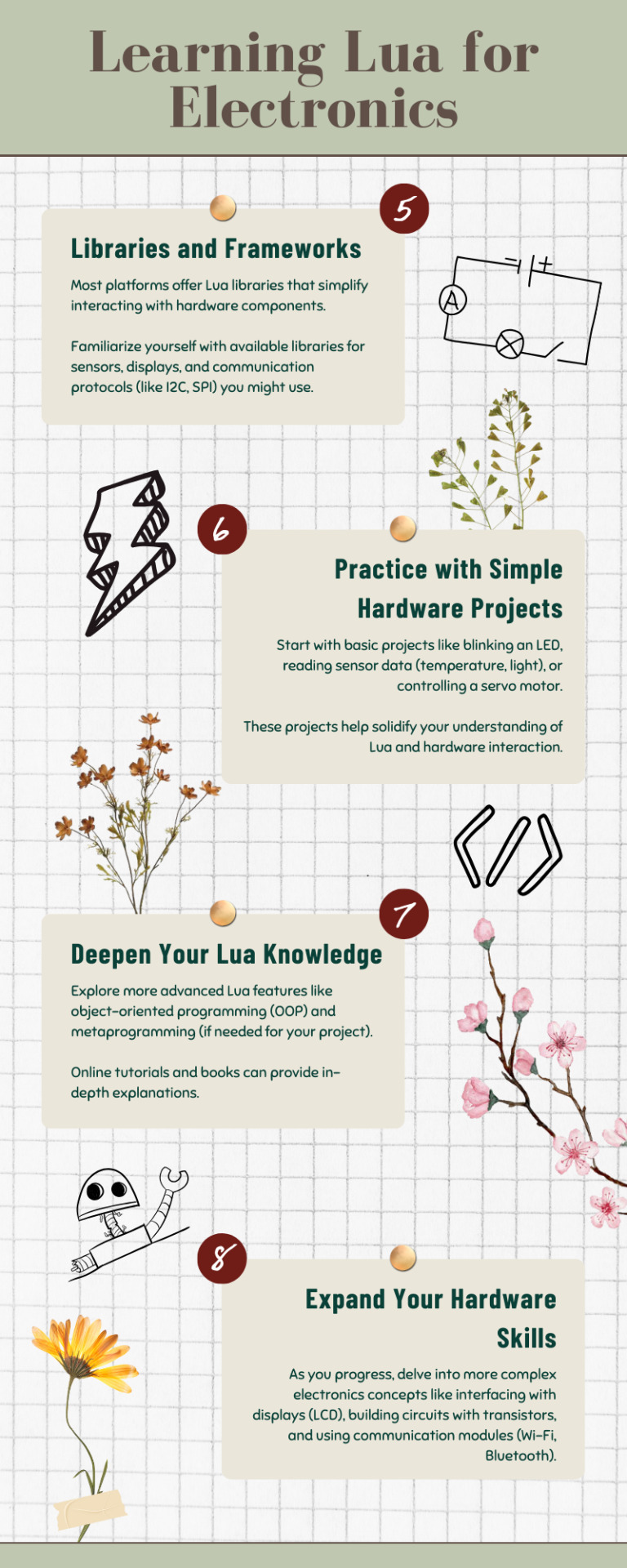
: ̗̀➛ Lua is a beginner-friendly scripting language that is well-suited for individuals starting out in Electronics. A simple roadmap to learning it for electronics projects! It'll break down the learning process into clear steps!
Due to its lightweight and efficient nature, Lua is perfect for microcontrollers (tiny computers in electronics) with restricted resources. This language enables users to engage with sensors and manage electronic components such as LEDs and motors in various projects.

!! There are other more popular programming languages for getting into Electronics such as C, C++ and Python! I'm just promoting Lua because it's still a good language to start with~!
#my resources#coding#codeblr#programming#progblr#studyblr#studying#comp sci#computer science#robotics#electronics#lua#tech#studyblr community#cs academia#programmer#study tips
116 notes
·
View notes
Text

Hold on to your butts.
#vintage illustration#vintage computers#computers#computing#technology#electronics#vintage electronics#vintage tech#vintage technology#engineering#computer science#mainframes#mainframe computers#tape drives#magnetic tape#tape storage#magnetic tape drives
23 notes
·
View notes
Text

Laser technique uncovers how titanium's electron behavior influences its physical properties
A research team at Yokohama National University has developed a way to study how the orientation and behavior of electrons in titanium influence its physical characteristics. Their findings, published in Communications Physics on December 18, 2024, could pave the way for the development of more advanced and efficient titanium alloys. Titanium is a very valuable metal because of its remarkable resistance to chemical corrosion, lightweight nature, and high strength-to-weight ratio. Its biocompatibility makes it ideal for medical applications, such as implants, prosthetics, and artificial bones, while its strength and durability are useful in aerospace and precision manufacturing. To get an idea of how titanium's atoms and electrons generate these properties, the researchers used a process called high harmonic generation.
Read more.
#Materials Science#Science#Lasers#Titanium#Electrons#Materials characterization#Computational materials Science#Yokohama National University
22 notes
·
View notes
Text
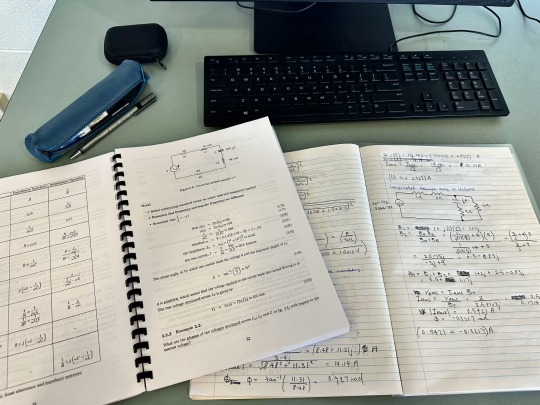
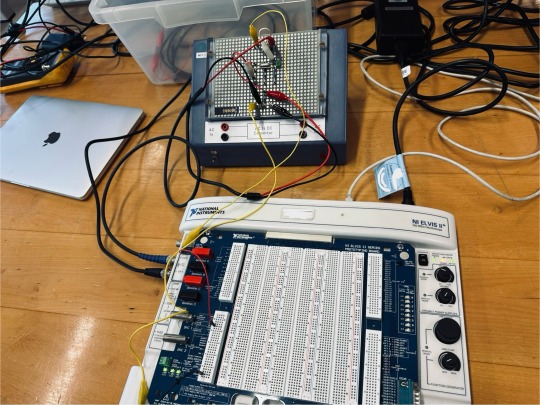
It’s been such a long week, y’all. There’s so much to do everyday, and there’s barely a chance to slow down and collect my thoughts! The picture on the right is from my physics lab. That thing is just as complicated as it looks, lol. At first, my equipment was faulty so I kept getting weird results and it was so confusing. But now, I’m headed on the right track!
(March 28th, 2024)
#study#studying#student#studygram#university#college#studyblr#motivation#study motivation#notes#study blog#study mode#study time#study hard#study tips#study abroad#study space#study notes#studyspo#study aesthetic#study inspiration#studyinspo#stem#stemblr#physics#electronics#computer science#stem student#stem studyblr#engineering
80 notes
·
View notes
Text









Donnie 2018 ver!

#stimboard#glitter#lava lamp#uranium#slime#donnie tmnt#rise of the teenage mutant ninja turtles#rottmnt#rise donnie#neon colors#science#computer#electronic#bright colors#Spotify
26 notes
·
View notes
Text
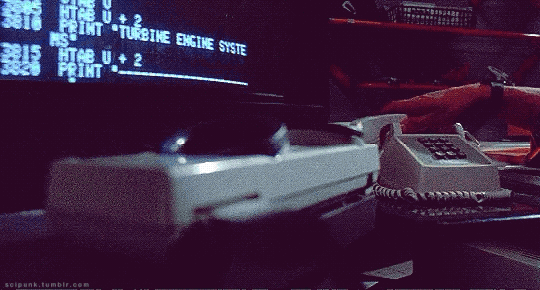

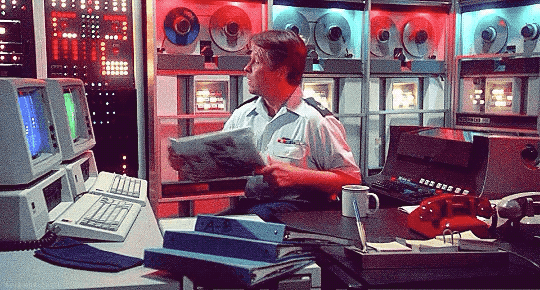




Weird Science (1985)
#weird science#scifi movies#funny#fantasy#nerd#geeky#scifi fantasy#computers#80s movies#1980s#gifs#gifset#modem#scanner#electronics#3d animation#hackers#hacking#cyberpunk aesthetic#scifi aesthetic#e=mc2
1K notes
·
View notes
Text
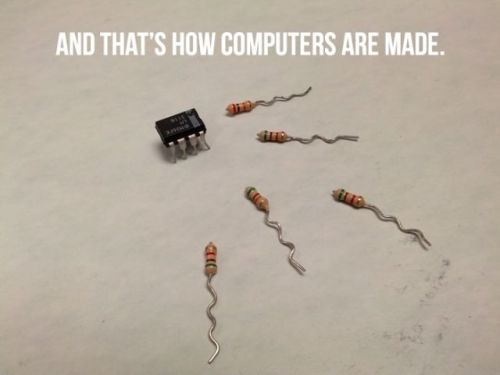
#pc#lol#funny#laughter#relatable#lmao#funny pics#computers/electronics#computer science#how its made#microchip
152 notes
·
View notes
Text
I rebranded my website and broke all your links! I'm very sorry!
So, tumblr has this super easy no safety rails involved, just push this button and tada option to change your display name and url, and I kinda just figured I could do that and it would auto-redirect everything pointed at the old ones to the new ones, but TURNS OUT NO! I just broke everything!
For what it's worth it's because the original name for this blog referenced me being very in the closet about being trans, and I have been very very out for over 10 years now, and also I'm gearing up to do a lot of self-promotion and the old name kinda had hundreds of dangerous stalkers with like alerts set up around it, so, I figured a clean break was do. But I didn't mean to break all these, so, here's my major tumblr projects' updated links. Uh... maybe run through and reblog them all so they populate again?
Let's Talk About How Ranma is Trans, and Not as a Metaphor:
Part 1
Part 2
Part 3
Part 4
How a Computer Works:
Part 1
Part 2
Part 3
Part 4
Part 5
And the entire plot of FF14 conveniently has its own sub-index... that I'll go and update when I get a chance I promise. If there's anything else I missed, feel free to let me know, but in the meantime, just copy the URL, paste it, replace the SGG part with wirewitchviolet and it should work again.
#trans reading#trans#ranma#ranma 1/2#computer science#computers#electronics#ff14#ffxiv#final fantasy xiv#final fantasy 14#at least now you don't need to remember which sites have the I and which have the double R right?
41 notes
·
View notes
Text

Fabrication of functional 3D multi-level microstructures on transparent substrates by one step back-side UV photolithography (Kang, Myeongwoo & Byun, Jae & Na, Sangcheol & Jeon, Noo. (2017). RSC Adv.. 7. 13353-13361. 10.1039/C6RA28812J.)
#science#engineering#photolithography#integrated circuits#electronics#physics#circuits#computers#technology
21 notes
·
View notes